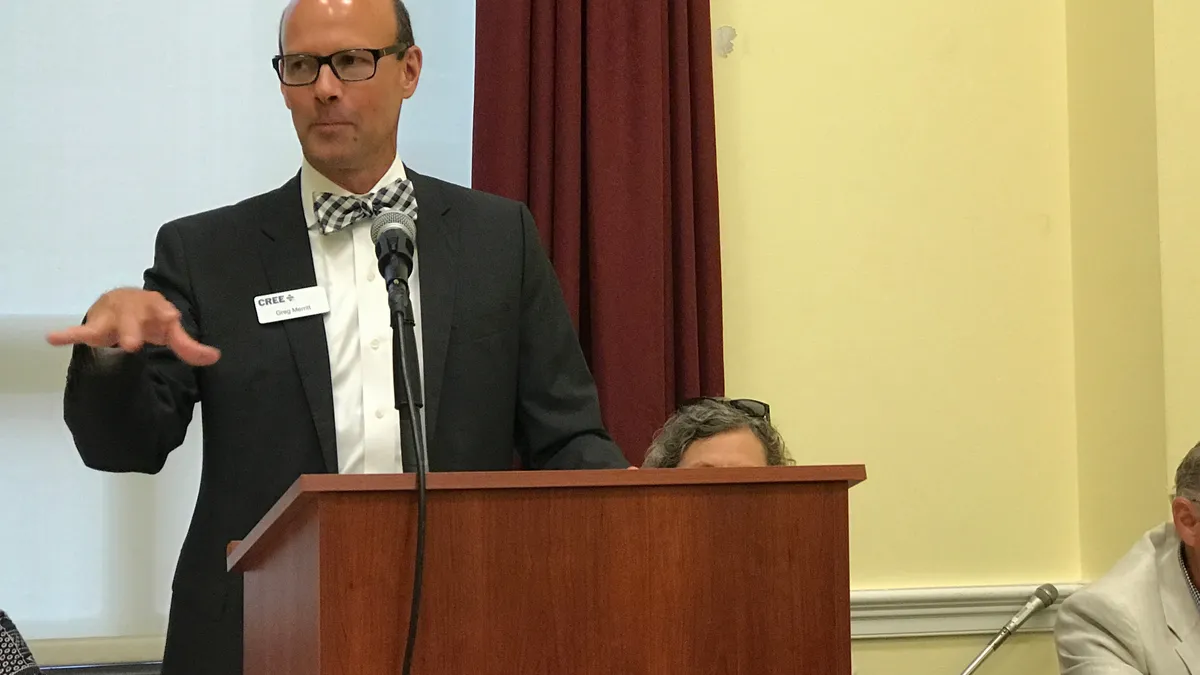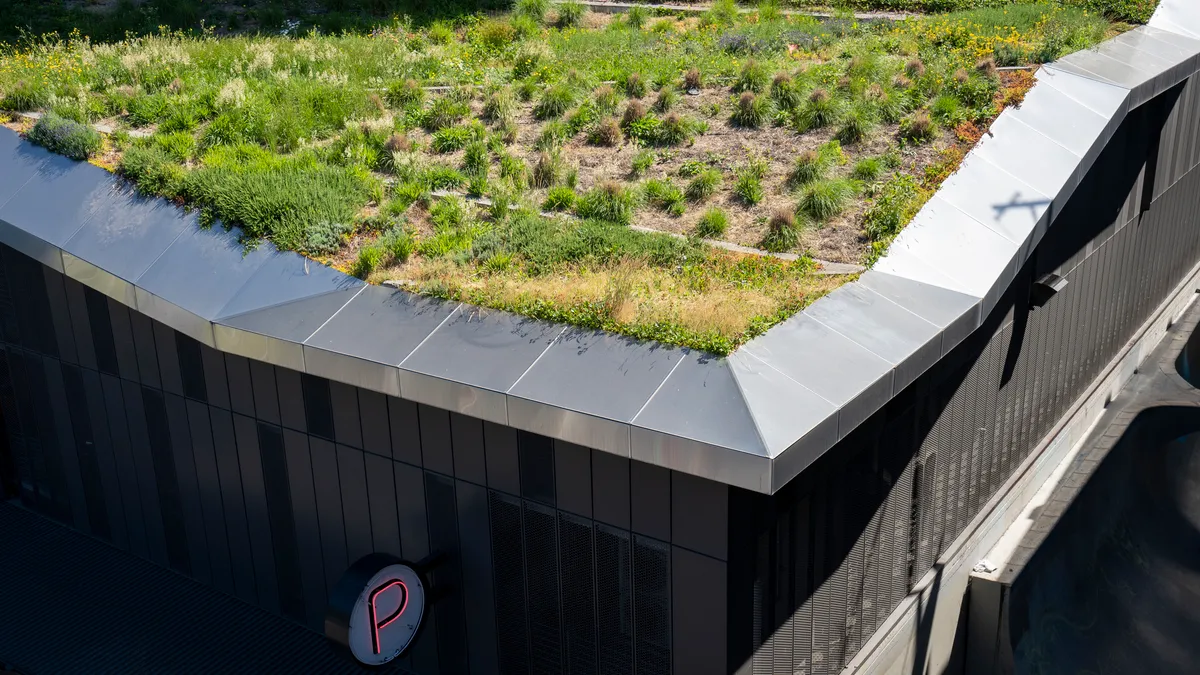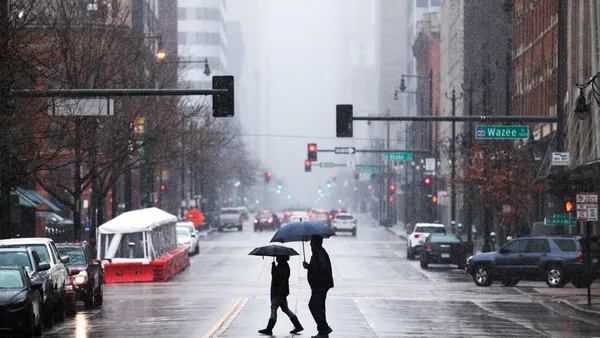Dive Brief:
- Lighting company Cree has a new platform currently in beta testing, Cree Smartcast Advisor, that would allow building managers to harvest data about occupancy, energy use and other metrics from sensors built into "smart light systems," and analyze that data all in one place. Greg Merritt, Cree's vice president of marketing and public affairs, provided a demo of the platform at the recent Congressional Renewable Energy and Energy Efficiency Expo.
- "You've heard a lot about the internet of things?" Merritt said during a panel. "I'd argue that there's a lot [lighting fixtures] in the spaces where we live than there are pretty much anything else." The SmartCast platform advertises, once installed, the ability to "make spaces more productive" by analyzing what rooms are used and how for long; the ability to "optimize system settings to reduce energy" by analyzing when people are in certain areas; and a "vacancy finder" that would allow people to use real-time data, collected from lighting fixtures, to find empty conference rooms.
- Keith Strausbaugh, a member of the federal government team at Philips Lighting, spoke more generally at the panel. "Lighting affects you in your workspace, it affects you at your home, lighting affects you when you're viewing a game at a stadium, wherever you're at," Strausbaugh said. "Instead of just flipping on switches, there ought to be a lot more control."
Dive Insight:
The 'control' that Strausbaugh talked about has much to do with "lighting as a service," a relatively new idea in which firms would pay a lighting company a subscription fee for lights in a building and any analytics tools or dashboards that the lighting company provides — similar to a program that Philips launched in the Netherlands.
"Most of you are familiar with getting Pandora or Spotify, or whatever you're going to stream," Strausbaugh said. "That's what the lighting companies are working out. Now you buy a subscription contract to gather all this information from these lighting systems, you can design it as a service, maintain it, gather all the information — do that exact kind of business mold in the lighting world."
The same type of partnership could be applied to public spaces. Cities could partner with a lighting company to analyze pedestrian traffic in public spaces, for example, and make decisions about how to deploy public safety or crowd control services. Cities could use occupancy sensors to see how crowded public transportation hubs get during different times to make planning decisions about opening new routes or expanding train platforms to accommodate more traffic. Smart cities are built, at least in part, on data — and ubiquitous lighting fixtures, both indoors and outdoors, present a natural choice for deploying different kinds of sensors to collect data and make informed decisions.










